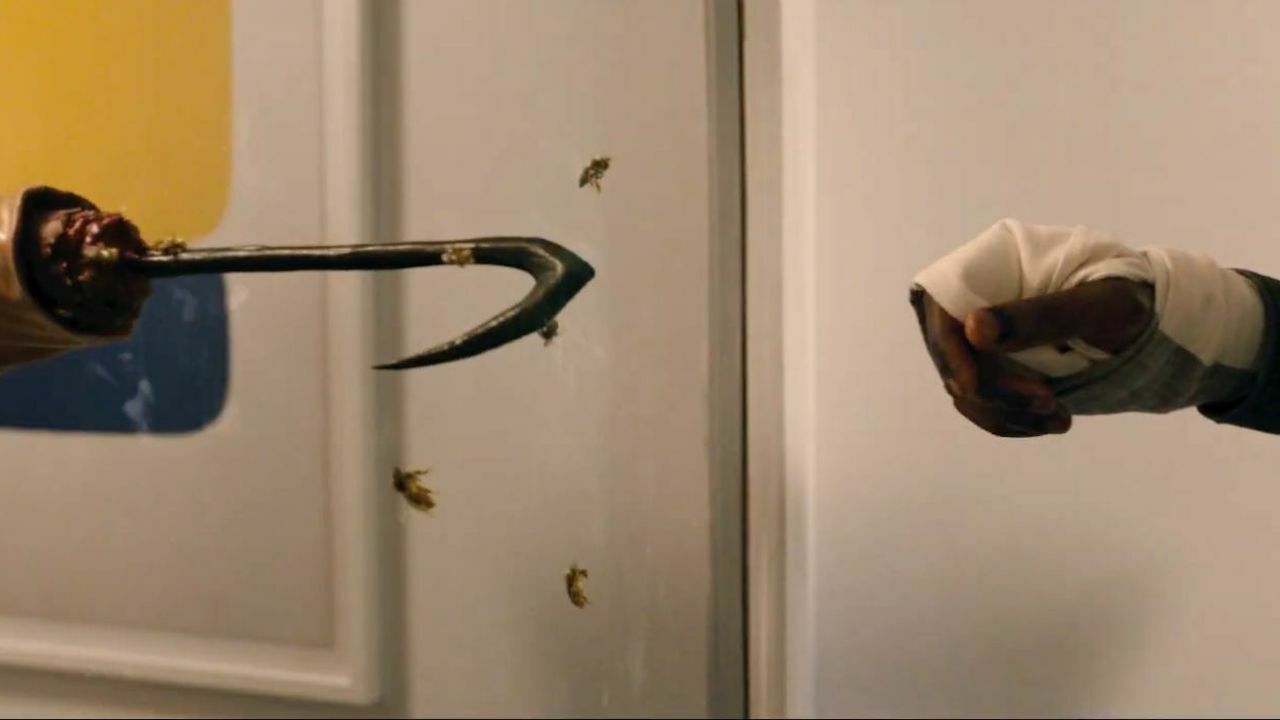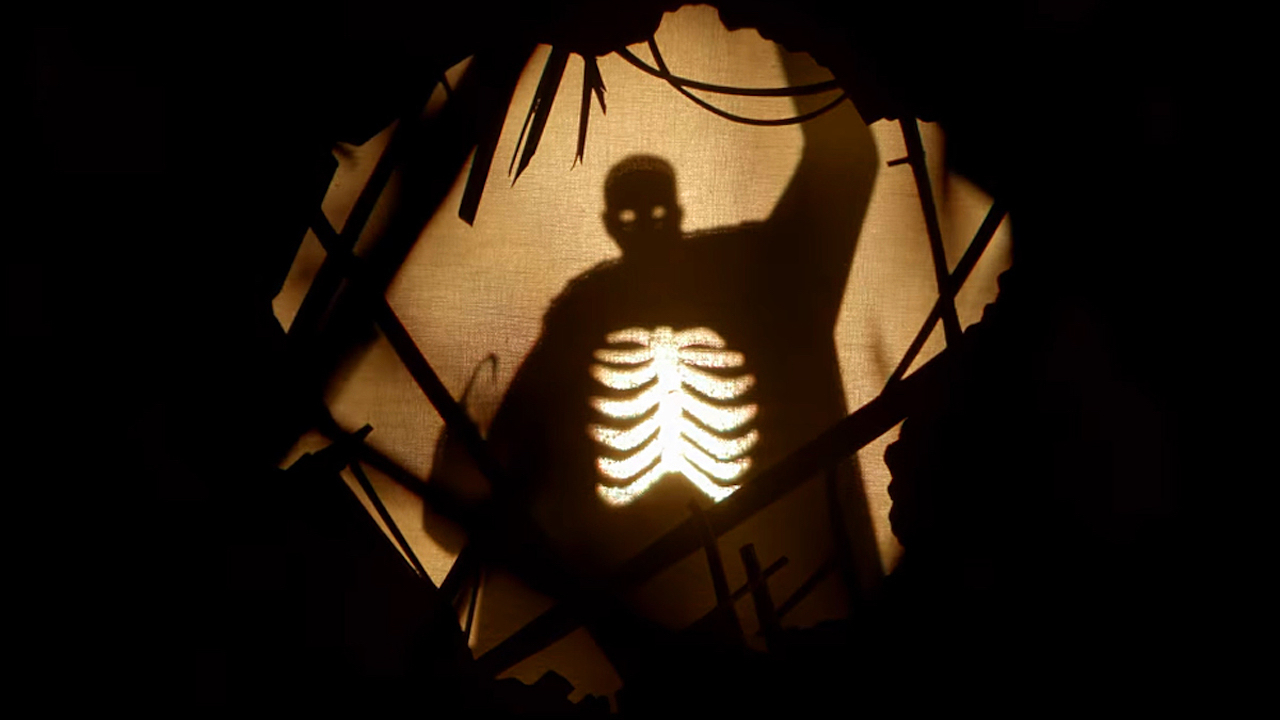Bernard Rose’s 1992 supernatural Clive Barker adaptation Candyman was not a huge commercial success, and while it inspired two sequels that decade, they were mediocre low-budget films that felt more like quick cash-ins than any meaningful attempt to extend its legacy. But in the 30 years since Rose’s film hit theaters, the masterful, haunting mix of social criticism and gory scares has helped the film retain its power in a way that many other horror movies of the ’90s have not. Director Nia DaCosta and producer/co-writer Jordan Peele have now gone back to the source to make a sequel that attempts to both honor the original and apply the mythology of Candyman to modern America.
The movie’s setting is Calibri, the Chicago community that stands in the same location as the original film’s Calibri Green. Back in the ’90s, this notorious housing project provided a compelling backdrop for the movie’s dissection of class and race, as white student Helen Lyle ventured into the poor Black neighborhood to investigate the legend of Candyman, a former slave turned vengeful hook-handed, bee-conjuring spirit. Today, Calibri is a wealthy and gentrified area, with expensive townhouses in place of the dilapidated apartments. It’s here that the movie’s main character, artist Anthony (Yahya Abdul-Mateen II), now lives with his girlfriend, art curator Brianna (Teyonah Parris).
Anthony is struggling to find a subject for an upcoming show, but when he starts investigating the history of Calibri, and in particular the legend of Candyman, he finds new inspiration. Unfortunately, that also means doing the one thing any horror fan will tell you never to do–say Candyman’s name five times into a mirror–and soon people around him are dropping dead in gruesome ways.

With his two directorial credits to date–Get Out and Us–Peele has shown himself to be skilled at exploring issues of social justice through the conventions of horror. DaCosta is new to the genre, but her acclaimed 2018 debut Little Woods proved her ability as a sensitive, character-focused filmmaker. Aptly, their take on Candyman holds up a mirror to the first movie. That was the work of a white British filmmaker exploring racial injustice and social divide from the point of view of an outsider. Conversely, DaCosta and Peele take us further inside the experience of Calibri’s residents–both middle-class newcomers such as Anthony and old-timers like William (Colman Domingo), who grew up in the old housing project.
Candyman is not exactly subtle in the way it establishes its themes, and some of the early scenes feel a little heavy-handed in the discussion of gentrification or Anthony’s struggle to represent the Black experience through his art. But the efficiency and ambition of the film are impressive–it only runs 91 minutes, but for the most part, DaCosta, Peele, and co-writer Win Rosenfeld find the right balance between the social and the scary. Political and topical horror movies–from Night of the Living Dead to Invasion of the Body Snatchers–rarely have time for subtle satire, preferring instead to keep the messages surface level and have the horror add to the overall impact. Candyman is no exception.
DaCosta brings a distinct visual style to the movie. Throughout the film, she plays with the motifs of glass and reflections–some of the opening credits are even mirrored–and the way she shoots and frames the horror set-pieces, as Candyman picks off his victims, is often highly inventive. One stunningly realized sequence is filmed at a distance through the windows of a luxury apartment block, while another is glimpsed in the reflection of a dropped hand-mirror. She also uses the striking shadowy puppetry of Kara Walker to explain the backstory of various characters. One of the movie’s main themes is the nature of storytelling, particularly the way urban legends morph and shift over time, and using shadow puppets is an ingenious way to both represent this and avoid clichéd exposition and flashback scenes.

Abdul-Mateen II is superb as the artist who finds recognition and inspiration only when people around him start dying. Anthony’s frightening decline–both mentally and physically–is well handled, and there are standout supporting performances from WandaVision star Parris (who DaCosta will next direct in the MCU movie The Marvels), Domingo, and Nathan Stewart-Jarrett as Brianna’s brother Troy. There are also appearances from Vanessa Estelle Williams, reprising her role as Anne-Marie McCoy from the first film, and, of course, Tony Todd as Candyman himself (briefly).
The film, unfortunately, stumbles toward the end. The last 15 minutes are packed with dark revelations, surprise villains, and baffling character decisions which seemingly only occur to move the plot forward rather than make any logical sense. For the first time, the blend of biting topical commentary and traditional horror feels confused and awkward, diminishing the movie’s overall effect. While a brisk running time is often a good thing for a horror movie to maintain tension, a slower build towards the climax might have helped deliver an ending as effective as the rest of the movie.
While iconic horror and slasher villains are often one-dimensional figures, Candyman remains one of horror’s most fascinating and complex characters, a tragic figure birthed through prejudice and rage. This latest movie shows that there’s plenty more that can be done with the character, and despite the fumbled climax, it does hint at where the subsequent films could take the series. Candyman 2021 might not hit the heights of the original movie, but it’s very likely we’ll be saying his name again soon.
Source: GameSpot


